Skip laurels are a popular evergreen hedge that can add beauty and privacy to any landscape. However, during the winter months, skip laurel leaves may turn brown, which can be concerning for homeowners. Understanding why skip laurel leaves turn brown in winter is crucial to maintaining a healthy and vibrant hedge.
Improper watering is one of the main reasons why skip laurel leaves turn brown. Skip laurels need adequate water to thrive, but overwatering or underwatering can cause damage to the plant. In addition, soil and mulch play a crucial role in the health of skip laurels, and pests and disease can also impact their overall condition.
Proper pruning techniques, fertilizing, and growing conditions are also important factors to consider when caring for skip laurels. By taking these factors into account, homeowners can prevent winter damage and maintain the beauty of their skip laurels year-round.
Key Takeaways on Skip Laurel Leaves Turning Brown in Winter
- Skip laurel leaves may turn brown in winter due to improper watering, soil and mulch issues, pests and disease, or other factors.
- Proper pruning techniques, fertilizing, and growing conditions can help prevent winter damage and maintain the beauty of skip laurels.
- Understanding the needs of skip laurels is crucial to caring for them and ensuring their health and vibrancy.
Check out these other top posts:
- Why Is My Zebra Plant Leaves Turning Brown?
- Schefflera Leaves Turning Brown
- Why Is My Umbrella Plant Turning Brown?
Understanding Skip Laurel

Skip laurel, also known as Prunus laurocerasus, is a popular evergreen hedge plant that is widely used for creating dense and fast-growing privacy screens. It is highly valued for its ability to grow in different soil types and climatic conditions.
However, during the winter season, skip laurel leaves may turn brown, which can be a cause of concern for many gardeners. Skip laurel is a hardy plant that can withstand harsh winter conditions. However, it is not uncommon for the leaves to turn brown during the winter season.
This is because skip laurel is an evergreen plant, which means that it retains its leaves throughout the year. During the winter season, the plant may experience a lack of water due to the dry air and cold winds, which can cause the leaves to turn brown.
One of the reasons why skip laurel is a popular choice for hedges is because it is a dense plant that can provide excellent privacy screening. The leaves of the skip laurel are thick and glossy, which gives the plant a lush appearance.
However, the density of the plant can also be a problem if it is not pruned regularly. Overgrown skip laurel hedges can become difficult to maintain and may develop brown leaves due to lack of sunlight and air circulation.
Overall, skip laurel is a hardy and fast-growing plant that can provide excellent privacy screening. However, gardeners need to be aware that skip laurel leaves may turn brown during the winter season, which is a normal occurrence.
By providing adequate water and pruning the plant regularly, gardeners can ensure that their skip laurel hedge remains healthy and attractive throughout the year.
Why Skip Laurel Leaves Turn Brown
Skip laurels are popular evergreen shrubs that are widely used in landscaping. However, during the winter season, many skip laurel owners may notice brown leaves on their plants. There are several reasons why skip laurel leaves turn brown during the winter months.
1. Winter Damage
One of the most common reasons why skip laurel leaves turn brown is winter damage. Cold temperatures, wind desiccation, and winter burn can all cause damage to the leaves. When the leaves are damaged, they may turn brown, yellow, or even black.
2. Drought
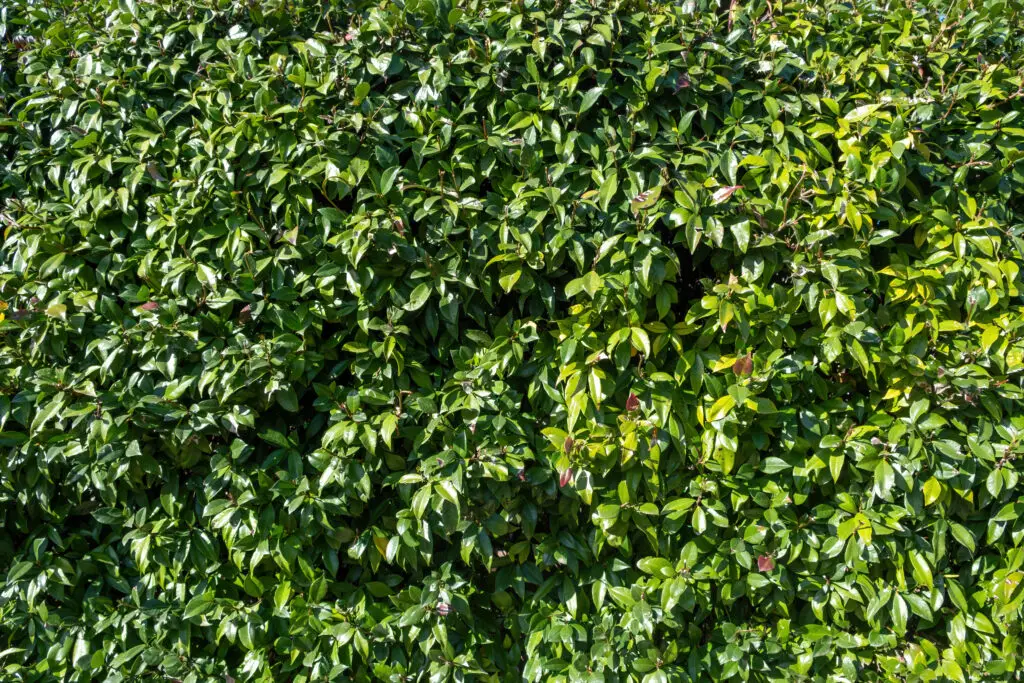
Another reason why skip laurel leaves turn brown is drought. Skip laurels require regular watering, especially during dry periods. When the soil is too dry, the leaves may turn brown and become brittle.
3. Fungal Leaf Spot
Fungal leaf spot is another common reason why skip laurel leaves turn brown. This disease is caused by a fungus that attacks the leaves, causing them to turn brown and develop spots. The spots may be circular or irregular in shape and may have a reddish-brown border.
4. Sunburn
Sunburn is another reason why skip laurel leaves turn brown. Skip laurels prefer partial shade to full sun. When they are exposed to too much direct sunlight, the leaves may become scorched and turn brown.
5. Desiccation
Desiccation is another reason why skip laurel leaves turn brown. This occurs when the leaves lose too much water due to dry air or wind. When the leaves are desiccated, they may turn brown and become brittle.
Effects of Improper Watering
Improper watering is one of the most common reasons why skip laurel leaves turn brown in winter. Brown leaves, especially when browning shows up at leaf tips, may be due to improper watering or excessively dry soil. Skip laurels require a consistent supply of water to maintain their health during winter.
Overwatering or underwatering can both cause the leaves to turn brown. If the soil is too dry, the plant will not be able to absorb enough water to keep the leaves healthy. Conversely, if the soil is too wet, the roots may become waterlogged, leading to root rot and other diseases that can cause the leaves to turn brown.
To ensure proper watering, it is recommended to water the tree deeply every seven to ten days during the absence of rain by allowing a hose or soaker to soak the ground for at least 45 minutes.
The frequency of watering should be adjusted depending on the moisture level of the soil. A moisture meter can be used to determine the moisture level of the soil and to avoid overwatering or underwatering.
It is essential to establish a regular watering schedule for skip laurels during the winter season. It is also important to water the plants during the early morning hours to prevent water evaporation due to the sun’s heat.
The Role of Soil and Mulch
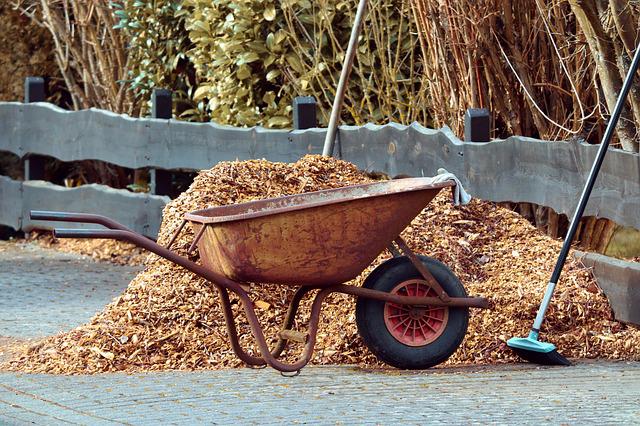
The soil and mulch play a crucial role in the health of skip laurels during winter. Understanding their importance can help prevent skip laurel leaves from turning brown.
Soil
Skip laurels prefer well-drained soil that is rich in organic matter. Soil that is too wet or too dry can cause stress to the plant, leading to brown leaves. It is important to ensure that the soil is moist but not waterlogged.
Adding organic matter, such as compost, to the soil can improve its water-holding capacity and nutrient content. This can help the skip laurel to better withstand winter conditions.
Mulch
Mulch is a layer of material that is spread over the soil surface to help retain moisture, suppress weeds, and regulate soil temperature. Organic mulch, such as shredded leaves or bark chips, is preferred for skip laurels as it can provide additional nutrients as it decomposes.
Mulch should be applied in a layer that is 2-3 inches deep, being careful not to pile it up against the trunk of the plant. This can help protect the roots from extreme temperatures and prevent moisture loss from the soil.
It is important to note that too much mulch can lead to excess moisture, which can cause root rot and other issues. It is recommended to refresh the mulch layer annually to maintain its effectiveness.
By ensuring that the soil is well-drained and rich in organic matter, and by applying a layer of organic mulch, skip laurels can better withstand winter conditions and reduce the likelihood of brown leaves.
Importance of Shade and Sunlight
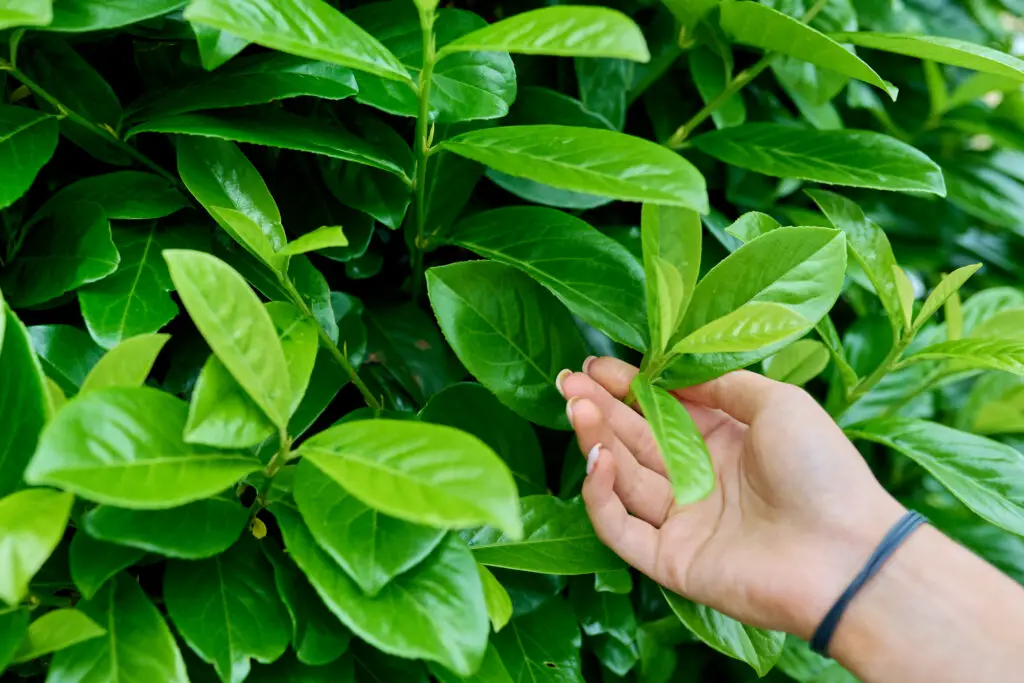
Skip laurels require a balance of shade and sunlight to thrive. These evergreen shrubs prefer partial shade to full sun, making them a great addition to gardens with varying levels of sun exposure.
Shade is important for skip laurels because it helps prevent moisture loss, which can cause leaves to turn brown. Moreover, too much direct sunlight can scorch the leaves and cause them to dry out. Skip laurels require morning sunlight to thrive, as it helps them produce energy through photosynthesis. However, too much direct sunlight can be harmful and cause the leaves to turn brown.
It is important to note that skip laurels planted in areas with too much shade may not grow as well and may become more susceptible to pests and diseases.
On the other hand, skip laurels planted in areas with too much sun may experience leaf burn and drying out. As a result, it is important to find a balance between shade and sunlight when planting skip laurels in your garden.
To ensure that skip laurels receive the right amount of shade and sunlight, it is recommended to plant them in an area that receives morning sunlight and afternoon shade. Additionally, planting them near other trees or shrubs can provide the necessary shade and also help protect them from harsh winds and extreme temperatures.
Dealing with Pests and Disease
Skip laurels are generally resistant to pests and diseases, but they can still be affected by various issues. Here are some common problems and solutions:
Pests
Pests can cause damage to skip laurels, especially during the winter months. One common pest that attacks skip laurels is the peach tree borer. This insect lays its eggs on the bark of the tree, and the larvae then burrow into the trunk and feed on the cambium layer, causing the tree to decline.
To prevent peach tree borer infestations, it is important to keep the tree healthy and well-watered. Pruning infected branches and applying insecticides can also be effective.
Other pests that can affect skip laurels include spider mites, scale insects, and leaf miners. These pests can cause damage to the leaves and stems of the tree, leading to brown spots and discoloration. To prevent pest infestations, it is important to keep the tree healthy and well-maintained. Applying insecticides and pruning infected branches can also be helpful.
Disease
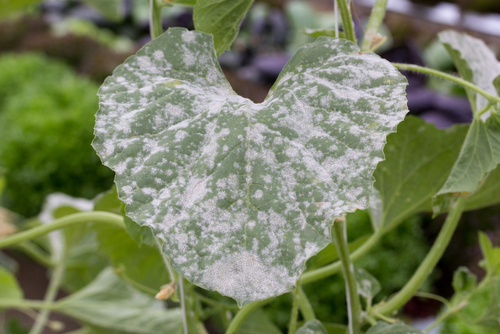
Skip laurels can also be affected by various diseases, including fungal infections. One common fungal infection that affects skip laurels is leaf spot.
This disease causes brown spots on the leaves of the tree, and can eventually lead to defoliation. To prevent leaf spot, it is important to keep the tree well-watered and to avoid overhead watering. Applying fungicides can also be effective.
Another fungal infection that can affect skip laurels is powdery mildew. This disease causes a white, powdery coating on the leaves and stems of the tree, and can also lead to defoliation. To prevent powdery mildew, it is important to keep the tree well-ventilated and to avoid overhead watering. Applying fungicides can also be helpful.
The Impact of Fertilizing
Fertilizing is an important aspect of skip laurel care, especially during winter. However, incorrect fertilization can lead to brown leaves, which is a common problem experienced by many skip laurel owners.
Using a slow-release fertilizer is recommended, as it provides nutrients to the plant gradually over time. This helps to prevent over-fertilization, which can lead to fertilizer burn and brown leaves.
Slow-release fertilizers also ensure that the plant receives a steady supply of nutrients throughout the winter, which is important for healthy growth.
When fertilizing, it is important to follow the instructions on the fertilizer package carefully. Over-fertilizing can lead to excessive nutrient uptake, which can cause fertilizer burn and brown leaves. It is also important to avoid fertilizing during periods of drought, as this can cause the fertilizer to accumulate in the soil and lead to over-fertilization.
In addition to slow-release fertilizer, organic fertilizers can also be used to improve soil health and provide nutrients to the plant. These fertilizers are less likely to cause fertilizer burn and brown leaves, as they release nutrients gradually over time.
Proper Pruning Techniques
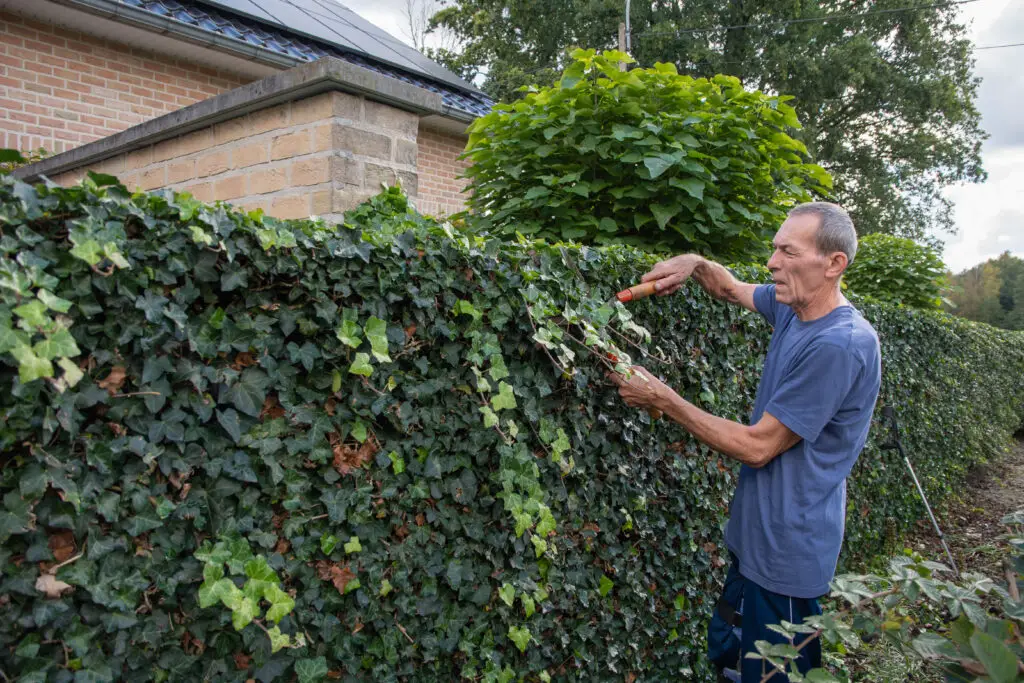
Proper pruning techniques can help prevent skip laurel leaves from turning brown in winter. Pruning is essential to remove any damaged or diseased branches, improve air circulation, and promote healthy growth.
When to Prune
The best time to prune skip laurels is in late winter or early spring, before new growth begins. This allows the plant to heal quickly and start producing new growth. Pruning during the growing season can cause stress to the plant and may lead to brown leaves.
How to Prune
When pruning skip laurels, it’s important to use sharp, clean tools to avoid damaging the plant. Begin by removing any dead or damaged branches, cutting them back to healthy wood.
Next, thin out any crowded or crossing branches to improve air circulation and sunlight penetration. Finally, shape the plant as desired, being careful not to remove too much foliage at once.
Tips for Pruning
Here are some tips to keep in mind when pruning skip laurels:
- Prune regularly to keep the plant healthy and prevent overgrowth.
- Avoid pruning during hot, dry weather, as this can stress the plant.
- Don’t prune too much at once, as this can shock the plant and lead to brown leaves.
- Use a pruning saw for larger branches and pruning shears for smaller ones.
- Disinfect your tools between cuts to prevent the spread of disease.
Preventing Winter Damage
Skip laurels are susceptible to winter damage, which can cause their leaves to turn brown. To prevent this, it’s important to take some measures before winter arrives.
One way to protect skip laurels from winter damage is by covering them with burlap. This helps to shield them from the harsh winter winds that can dry out the leaves and cause them to turn brown.
Be sure to wrap the burlap loosely around the plant, leaving some space for air circulation. This will prevent the burlap from trapping moisture and causing the plant to rot.
Another way to protect skip laurels from winter damage is by applying an anti-desiccant spray. This spray helps to seal in moisture and prevent the leaves from drying out. Be sure to apply the spray on a mild, dry day, and follow the manufacturer’s instructions for best results.
It’s also important to ensure that skip laurels are well-watered before winter arrives. This helps to ensure that they have enough moisture to withstand the winter months. However, be careful not to overwater them, as this can cause root rot.
In areas with heavy snowfall, it’s important to gently brush off any snow that accumulates on the skip laurels. This helps to prevent the weight of the snow from breaking the branches.
The Significance of Growing Conditions
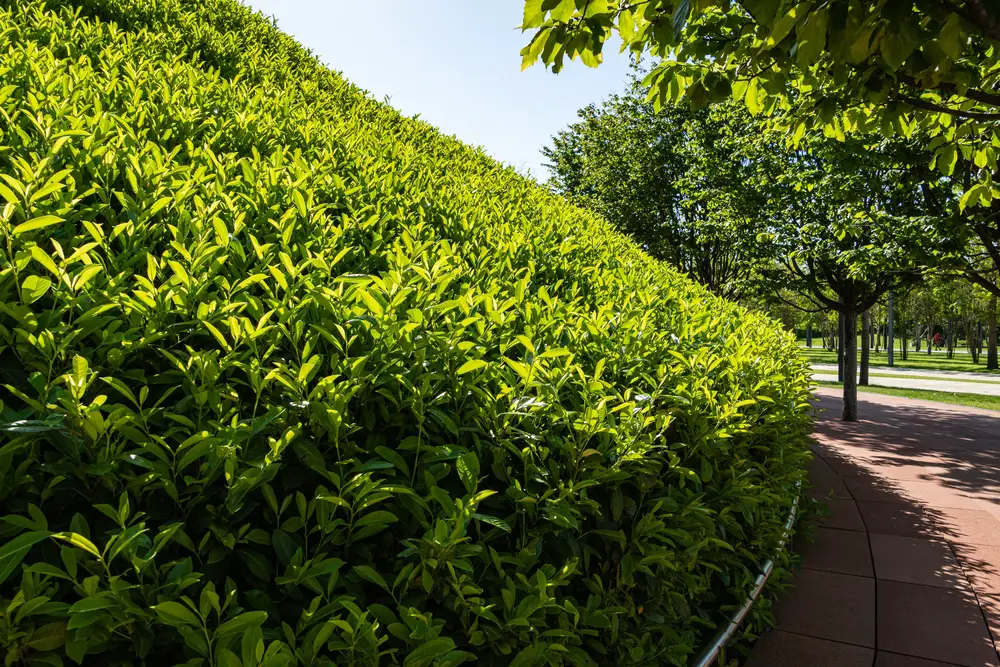
Skip laurels are evergreen shrubs that are popular for their dense foliage and ability to form hedges. However, they are susceptible to browning of leaves in winter due to various reasons. One of the most significant factors that affect the health of skip laurels is growing conditions.
The hardiness zone of the area where skip laurels are grown plays a crucial role in determining their ability to withstand cold temperatures. Skip laurels are hardy in USDA hardiness zones 6 to 9, which means they can tolerate temperatures as low as -10°F to 20°F.
If skip laurels are grown in an area that is outside of this hardiness zone, they may not be able to tolerate the cold temperatures and may suffer from winter damage.
In addition to the hardiness zone, other growing conditions also affect the health of skip laurels. These include soil type, moisture levels, and exposure to sunlight. Skip laurels prefer well-drained soil that is slightly acidic.
If the soil is too alkaline or waterlogged, the roots may become damaged, leading to brown leaves. Similarly, if skip laurels are grown in an area that receives too much or too little sunlight, they may not be able to photosynthesize properly, leading to leaf damage.
Proper watering is also essential for the health of skip laurels. Overwatering or underwatering can lead to brown leaves. Skip laurels require deep watering every seven to ten days during the absence of rain. The soil should be soaked for at least 45 minutes to ensure that it is moistened to a depth of 6 to 8 inches.
The Beauty of Skip Laurels
Skip laurels are a popular evergreen shrub that can add beauty and privacy to any landscape. These lush shrubs are known for their glossy, dark green leaves and fragrant white flowers that bloom in the spring. Skip laurels are also a great choice for those looking for a low maintenance plant that can be used as a privacy screen.
One of the most attractive features of skip laurels is their dense foliage that can provide an excellent barrier for privacy. They can grow up to 10 feet tall and 6 feet wide, making them a perfect choice for creating a natural fence. Skip laurels are also known for their low maintenance, as they require little pruning and can thrive in a variety of soil types.
In addition to their privacy benefits, skip laurels also offer a beautiful aesthetic to any landscape. Their glossy, dark green leaves provide a year-round beauty that can create a stunning backdrop for other plants.
The fragrant white flowers that bloom in the spring are another added bonus, providing a sweet scent and attracting pollinators to the garden.
While skip laurels are generally easy to care for, they can experience some issues during the winter months. As the temperatures drop, skip laurel leaves can turn brown and lose their luster, causing concern for gardeners. However, with proper care and attention, skip laurels can be revived and returned to their lush green glory.
Frequently Asked Questions
How can I prevent my skip laurel leaves from turning brown in winter?
To prevent skip laurel leaves from turning brown in winter, it is essential to ensure that the plant is well-hydrated before the onset of winter.
Water the plant deeply and regularly during the fall season, so that it can store enough moisture to last through the winter. Additionally, it is important to avoid pruning the plant in the fall as this can stimulate new growth, which is more susceptible to winter damage.
What causes skip laurel leaves to turn brown and fall off?
Skip laurel leaves turn brown and fall off due to a condition known as winter burn. Winter burn occurs when the leaves of the plant lose moisture faster than they can absorb it from the soil.
This can happen when the ground is frozen and the roots are unable to take up water. The result is that the leaves dry out and turn brown.
Are skip laurels prone to winter burn?
Yes, skip laurels are prone to winter burn. This is because they are evergreen plants that do not shed their leaves in the winter. As a result, they are exposed to the harsh winter weather, which can cause their leaves to dry out and turn brown.
What can I do to revive my skip laurels with brown leaves?
To revive skip laurels with brown leaves, it is essential to prune away the damaged leaves and branches. This will encourage new growth and help the plant to recover. Additionally, it is important to water the plant deeply and regularly during the spring and summer months to help it recover from the winter damage.
Is it normal for skip laurel leaves to turn yellow in winter?
Yes, it is normal for skip laurel leaves to turn yellow in winter. This is because the plant is experiencing stress due to the cold weather and lack of moisture. However, if the leaves turn brown and fall off, it may be a sign of winter burn.
Can skip laurels recover from winter burn?
Yes, skip laurels can recover from winter burn. However, it may take some time for the plant to recover fully. It is important to prune away the damaged leaves and branches, water the plant deeply and regularly, and provide it with the necessary nutrients to help it recover. With proper care, skip laurels can recover from winter burn and grow healthy and strong again.

Hey, I’m Lisa and I’ve been an avid gardener for over 30 years. I love writing, talking and living in the garden! Feel free to connect with me on my socials below

